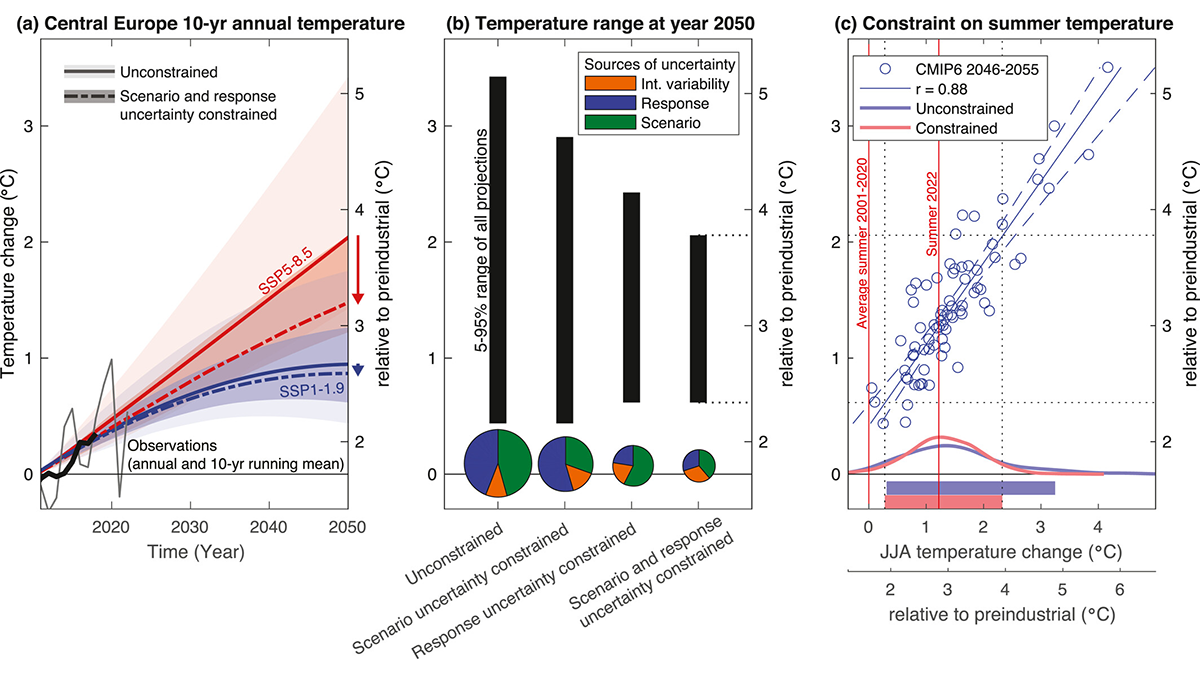Editors’ Highlights are summaries of recent papers by AGU’s journal editors.
Source: AGU Advances
With ongoing climate change and the certainty of additional near-term warming, adaptation to climate change is now a necessity for many regions. From a climate system perspective, uncertainty originates from three sources: scenario uncertainty, response uncertainty, and internal variability. Internal variability is largely unpredictable, but scenario and response uncertainty originate from our limited understanding of socio-economic and climate dynamics.
Lehner et al. [2023] combine these two recent advances in understanding of socio-economic dynamics and climate system response to create constrained global and regional projections of temperature with the goal of illustrating the current potential to better inform climate adaptation decisions at mid-century and beyond. Constrained climate projections demonstrate real progress in the understanding of likely futures that can support climate adaptation planning in cases where large uncertainty has previously hindered progress. The time has come to explore and communicate these combined constraints more widely in climate change impact assessments.
Citation: Lehner, F., Hawkins, E., Sutton, R., Pendergrass, A. G., & Moore, F. C. (2023). New potential to reduce uncertainty in regional climate projections by combining physical and socio-economic constraints. AGU Advances, 4, e2023AV000887. https://doi.org/10.1029/2023AV000887
—Donald Wuebbles, Editor, AGU Advances

